And a year full of new perspectives — on impossibilities that have become reality. Full of reflection and vision, orientation and innovation. As you might expect, this Ars Electronica Futurelab retrospective will also be forward-looking. For its anniversary, the Lab will reflect on its journey into the future at the intersection of art, technology and society. It will present memories of hypotheses and prototypes — historical visions, reflected anew from the perspective of the present. With its extensive store of knowledge, experience and creativity, the international team of the Ars Electronica Futurelab has artistically reflected on its journey into the future this year, visualized it and made it accessible to a broad public in multimedia form — online and on-site. In collaboration with author and curator Andreas J. Hirsch, we produced Alchemists of the Future, a book that also interprets the visionary work of the Future Alchemists in literary terms.
As a longtime friend and companion of Ars Electronica, he speaks in this interview about his insights into the lab’s DNA, the milestones and stumbling blocks on its path to the future, and the philosophy of Art Thinking in the team’s everyday work. It is available as both a download and to order as a hardcopy.
“The book is the result of a joint reflection and was created in close collaboration with the Ars Electronica Futurelab team. Working on it brought home to me the Lab’s very special way of working. As part of a complex, multi-part process, I was thrown into the midst of an extraordinary event that made some of the DNA of this phenomenon visible. That’s exactly what Alchemists of the Future is supposed to be about. The book aims to show the conditions under which innovation can emerge.” – Andreas J. Hirsch


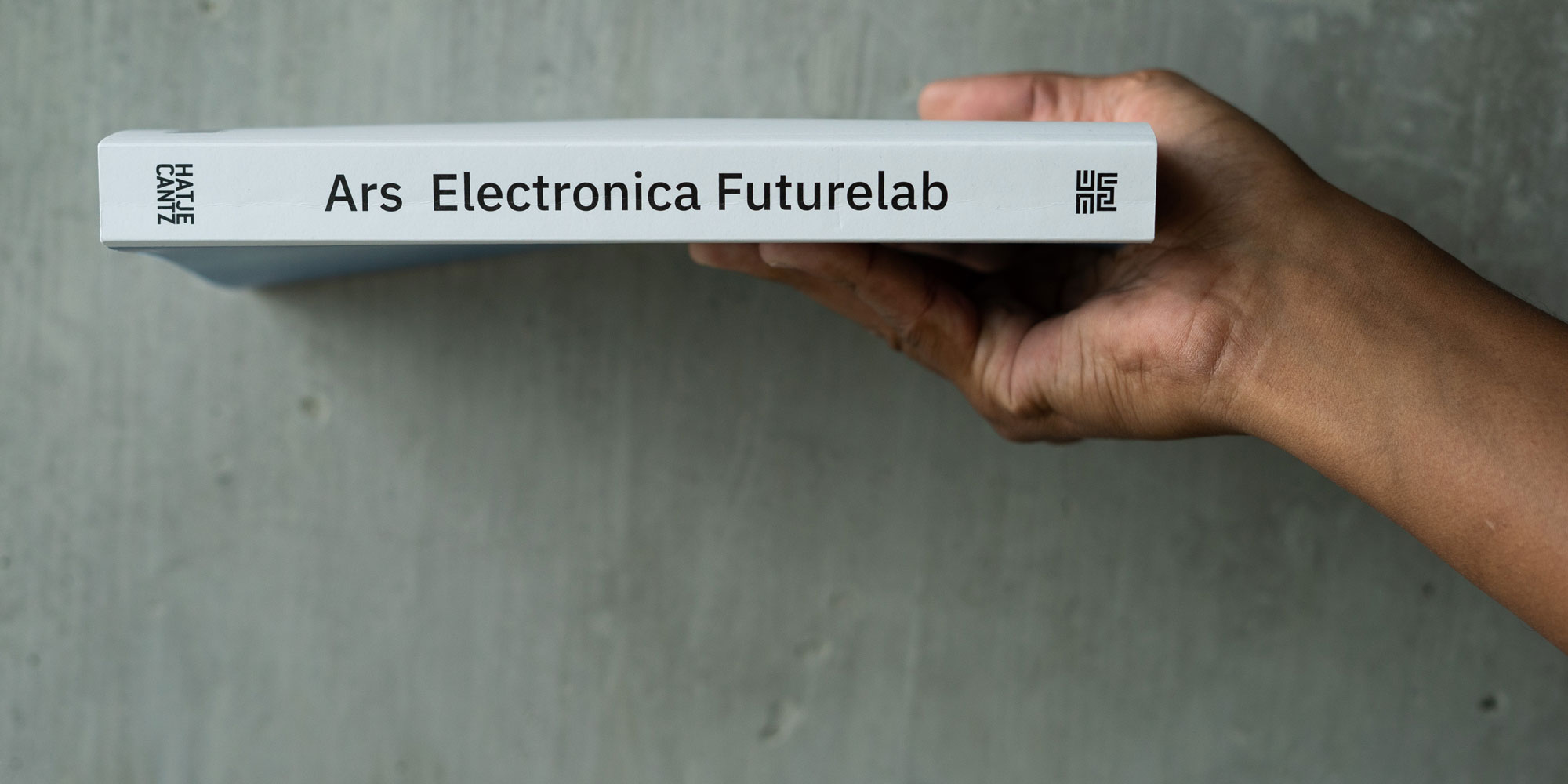

In „Creating the Future – A Brief History of Ars Electronica,“ you already covered almost the entire history of the institution in 2019. How does Alchemists of the Future differ from that publication, which was released on the occasion of Ars Electronica’s 40th anniversary?
Andreas J. Hirsch: Creating the Future simply tells a story: the amazing story of Ars Electronica, spanning four decades. An intensive examination of source materials, but also of first-hand witnesses, was the starting point for the project. In essence, it’s an attempt to write history, although the historical event is still developing dynamically.
“Alchemists of the Future” follows a completely different concept. The book isn’t intended to be a “navel-gazing” look at the past 25 years. Instead, it takes the history of the Ars Electronica Futurelab as an occasion to take a look at the dynamics of the future along the diverse themes of their work.
And that’s what made working on this book a really exciting process for me. Although I’ve been closely associated with Ars Electronica for many years, I remain an outside observer so I can be a mirror for the institution in some respects. Over the years, however, it’s not a static mirror, but one that continues to move dynamically. That kind of shift in the mirror creates an image that can be read and interpreted in a new way — like a kaleidoscope. The kaleidoscopic images developed in the Lab express this very well. At best, something of the inner dynamics becomes visible. So the book might also make a modest contribution to the Lab’s self-reflection. It’s possible that the project of making a book specifically about the Ars Electronica Futurelab for the first time can also be seen as a symptom of precisely this confrontation with itself. It’s probably the slowness of the book medium in and of itself that offers the privilege of reflection. There’s also an opportunity to shed light on projects and developments that have long been overshadowed, because so many more spectacular and high-profile projects have, understandably, been in the foreground.
During your work on this book, you personally experienced the Ars Electronica Futurelab’s very special method of “Art-Thinking”:
Andreas J. Hirsch: I think so. Both the process of creating the book and the result itself have something to do with “Art-Thinking in Action.” The Art Thinking philosophy, as formulated by Hideaki Ogawa, is the result of a process that took place over the last few years. And yet, what the philosophy draws from and what constitutes it is something that runs through the entire history of Futurelab. Art Thinking has not only shaped the way the Lab works in recent years, it has put it into an explicable format. Art Thinking may not have evolved directly into a method, but it has become a “mindset” that can be taught and applied in workshops.
What were the social conditions for these visionary projects in 1996? How was the foundation laid 25 years ago for the Ars Electronica Futurelab as part of the institution?
Andreas J. Hirsch: The 1990s were a time when politicians were still willing to take a risk on major cultural projects that would probably be more difficult to implement today. At that time, it was possible for a few protagonists — ORF Provincial Director Hannes Leopoldseder, Franz Dobusch, the longtime mayor of the City of Linz, and also university professor Gustav Pomberger — to pool a lot of energy and create a cultural institution like the Ars Electronica Center, followed by the Futurelab, and promote its development. A Futurelab was already envisioned in the Ars Electronica Center’s preparatory phase in the 1990s. That Ars Electronica would also need something like its own lab and “a think and do tank” was always there as an idea under the surface. At that time, however, the focus was on the Center — the institution’s heavyweight — at first.
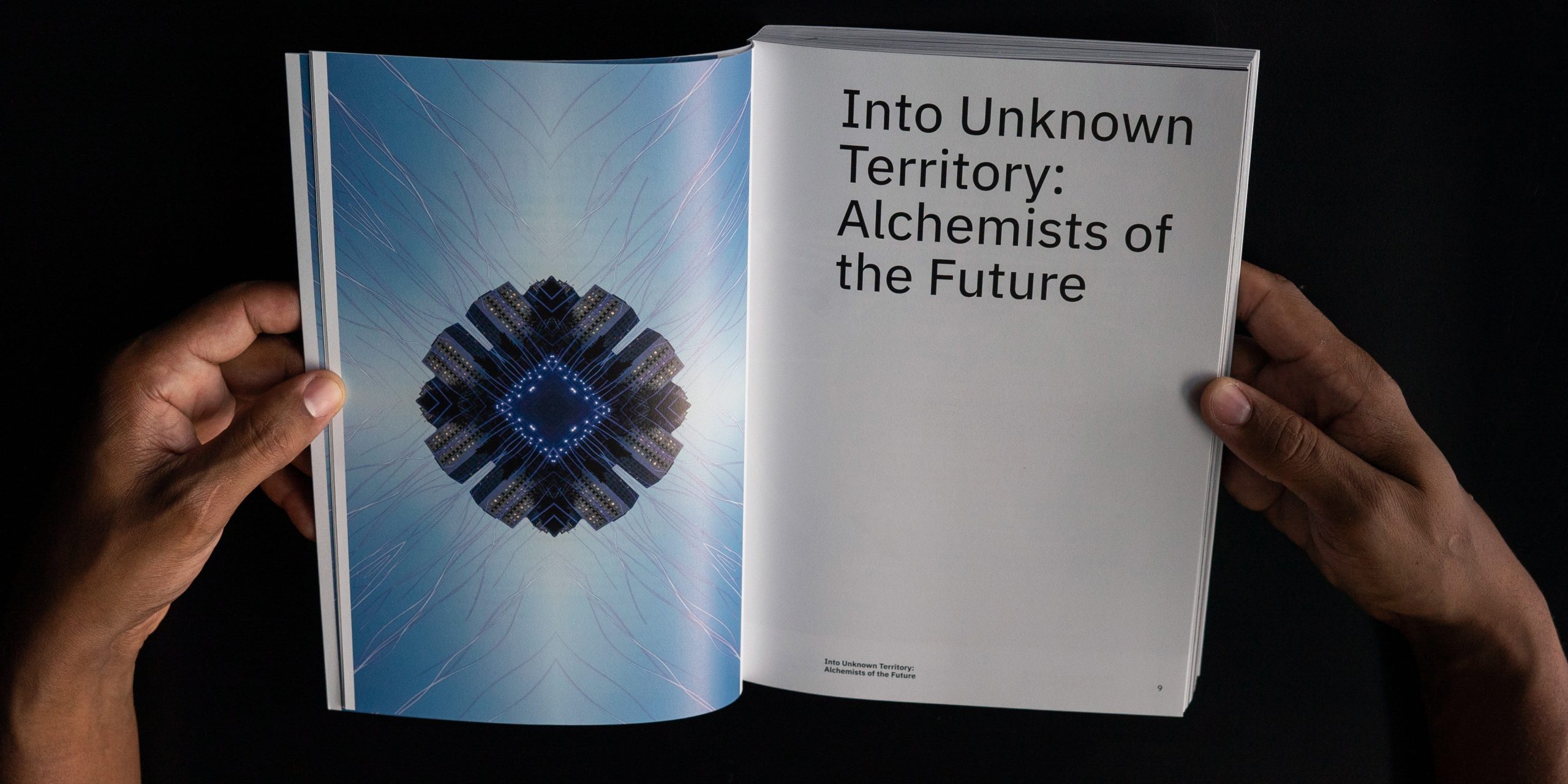
At the same time, around 1996, the ever-expanding Internet was highly relevant: A veritable hype of social visions around theory and art concepts arose based on it alone. Suddenly, people everywhere were concerned with how the Net could be populated with new forms of art in particular, and what’s more, with an all-encompassing “cyberculture.”
When Horst Hörtner was brought to Linz in 1995 by Gerfried Stocker as technical director of the Ars Electronica Center, that was actually the beginning of the “incubation phase” for the Futurelab. In any case, without this step that Gerfried Stocker took as the newly appointed Artistic Director of Ars Electronica, the Futurelab wouldn’t have become what it is today. And the intensive work on all the installations and features of a completely new “Museum of the Future” was also to prove formative for the later Futurelab.
Within a very short period of time, Horst Hörtner put together a team that not only had the necessary knowledge, but also the appropriate mindset for the task, which straddled art and technology. This first team consisted of people with a pronounced individuality and a certain hacker and artist spirit, a very experimental approach, which still characterizes the Futurelab today.
What moments have particularly shaped the Lab’s development and or been game changers in the Lab’s history?
Andreas J. Hirsch: I’ve become cautious about dividing things into periods, because the division is often strongly influenced by a certain point of view. But of course there were certain milestones: some have to do with internal development, some with workspaces, some with essential technologies and technical infrastructure, and some of course with spectacular projects that had worldwide visibility.
The “incubation phase” in 1995/1996 and the official establishment in 1996 were followed by a very stormy adolescent phase: people, ideas and concepts were in motion; first projects for partners from industry and academia emerged; the Futurelab found a strategic orientation and formed a permanent team accordingly.
Two important milestones were reached in 2002 and 2009: The Futurelab moved to new premises, which was important for the internal development of the team, its self-image and its external impact. Its first dedicated space was not far from the Ars Electronica Center but no longer within it, right next to a supermarket. These first own premises created an identity; it was the beginning of the Futurelab’s “garage years,” to use an allegory from the legendary history of many an IT company. When the significantly expanded Ars Electronica Center opened in 2009, the Futurelab was given laboratory space and offices in its own wing with a view of the Danube. Interestingly, this second relocation also coincided with significant structural changes.
But the history of the Futurelab can also be divided along the lines of formative technologies surrounding two pioneering 3D simulation environments in the Ars Electronica Center: The “era” of the CAVE from 1996 to 2008 and the “era” of Deep Space or Deep Space 8K since 2009, both of which became true centers of excellence for the Futurelab and simultaneously served or still serve as public infrastructure. Deep Space 8K is also a proprietary development of the Ars Electronica Futurelab that sets an international example.
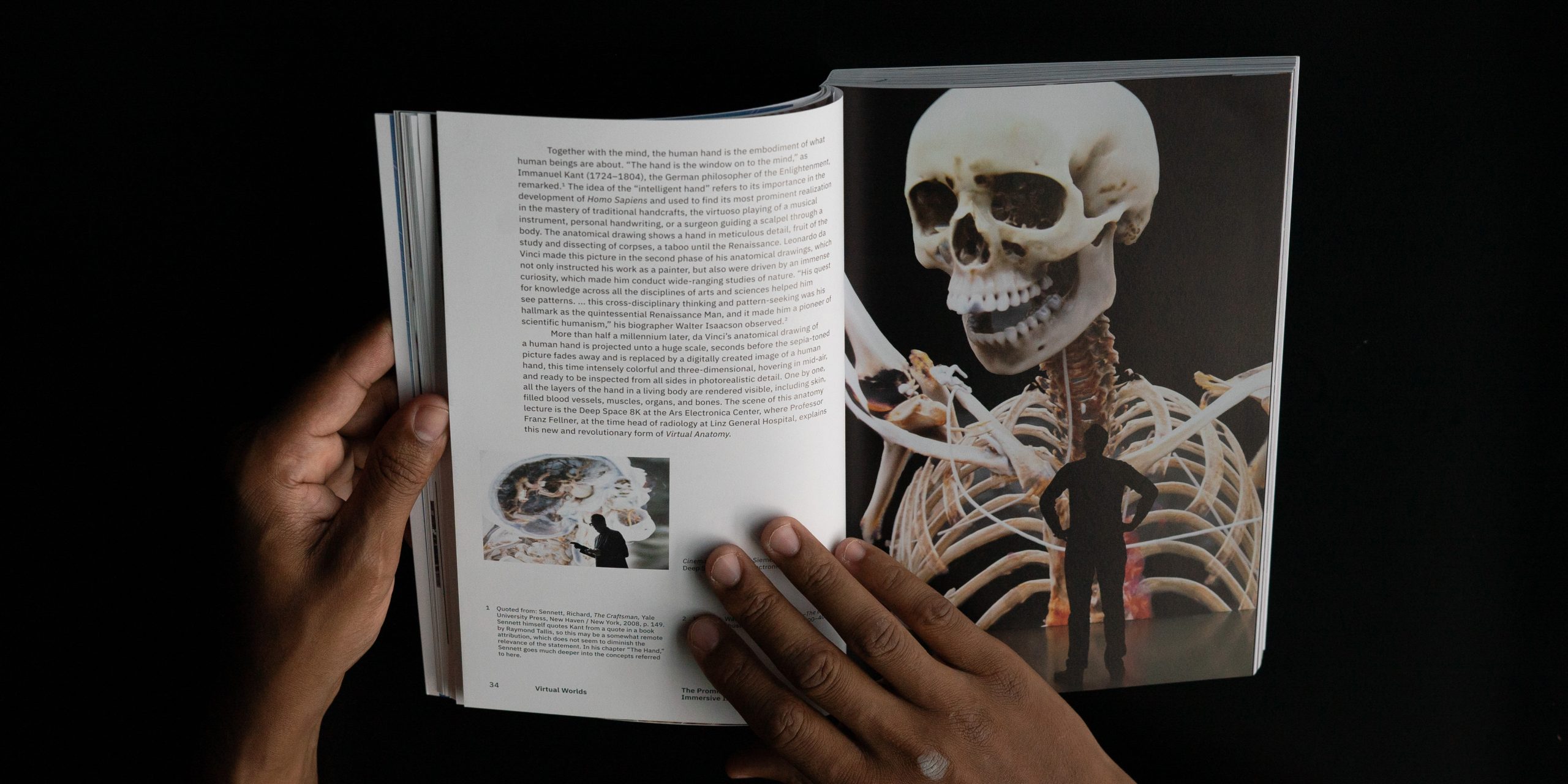
The Futurelab’s contribution to the Ars Electronica Klangwolke of 2012 was a highly publicized milestone and marked the beginning of what are probably the Futurelab’s best-known activities internationally. Instead of the obligatory but environmentally damaging fireworks, the Futurelab sent a swarm of glowing drones into the night sky above Linz: the birth of the “Spaxels.” The idea was as simple as it was unusual: The Futurelab understood the task of flying a large number of drones in complex formations as a three-dimensional design problem. Many experts at the time doubted that such a coordinated flight with so many drones in such a short time was even possible. But Futurelab made what was thought to be impossible possible: at its premiere, the experiment finally worked, and Spaxels performances followed across the globe.

On the same evening in September 2012 when the Spaxels took to the skies above Linz, thousands of people swarmed through the city with self-designed, illuminated letters from the alphabet and gathered on Linz’s Donaulände. The so-called “Klangwolke ABC” was also largely developed and realized by the Ars Electronica Futurelab, in collaboration with the festival and the Center. This large-scale social participation project focused on “character” — and thus on people — in the age of online networks. The giant galaxy of glowing letters that came together to form words and entire sentences impressively demonstrated the potential of collaboration among people, which is a major theme in the work of the Ars Electronica Futurelab.

The Ars Electronica Futurelab’s Art Thinking program, which was developed under the leadership of Hideaki Ogawa, is another milestone that’s already leading into the present. Art Thinking came into being in response to the growing interest of many organizations in the special way of thinking and working that the Lab has cultivated over the course of 25 years in a daily, fruitful exchange between “Art” and “Science.” With Art Thinking programs, the Futurelab is no longer just a service provider for developing innovations, but also a valuable dialogue partner. It thus helps to facilitate creative exchange between artists and engineers. This process has incredible innovation potential: academic institutions as well as companies, each rooted in their complex structures, learn and benefit from this dialogic, artist-driven way of thinking and working.
The Ars Electronica Futurelab was already internationally networked at a very early stage, and in the new millennium it also became increasingly active on behalf of international clients. Japan, which has always maintained intensive contacts with Ars Electronica, is a good example of such cooperation and customer relations. The establishment of Ars Electronica Japan with Hideaki Ogawa as its director was a logical milestone in the Futurelab’s international activities. This division within the Ars Electronica Futurelab offers innovative research and consulting services for Japanese partner companies: Innovative cultural programs are implemented together with citizens, artists and public educational institutions in the Japanese region in order to develop a creative ecosystem for industry to shape future society.
How would you describe the Lab’s team as an interwoven system of individuals?
Andreas J. Hirsch: The Lab’s members include a broad spectrum of very different and highly individualized personalities and perspectives. Increasingly, they include individuals with “hybrid” qualifications, who have both artistic training and training in technical subjects. The Ars Electronica Futurelab is a remarkable free space where individuality and utopias are possible. It’s a place where people come to contribute something that perhaps wasn’t even planned beforehand. The Futurelab is a field of intense dynamics thanks to the people working there, which certainly contributes to its uniqueness.
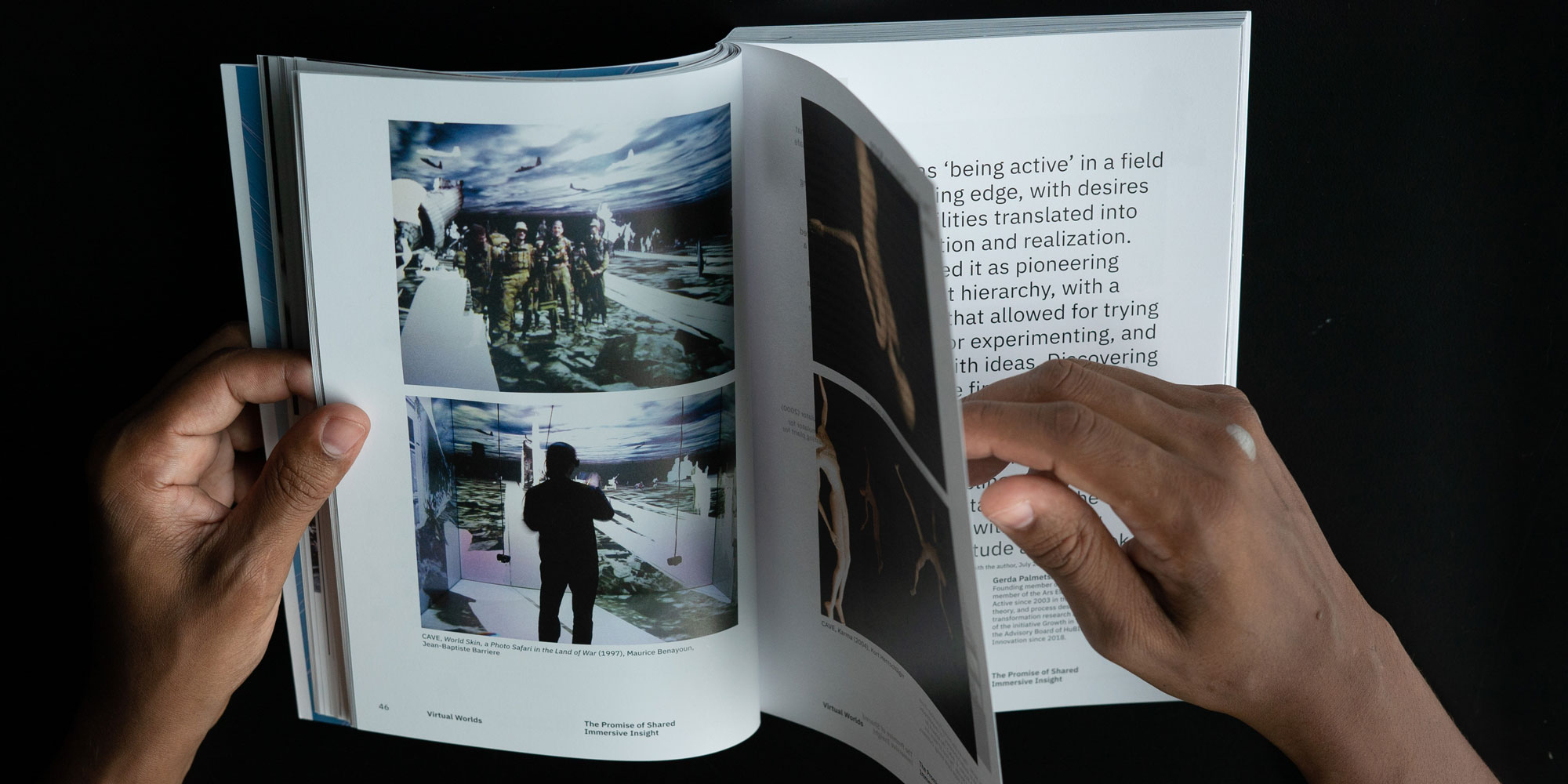
The book, Alchemists of the Future, reflects on 25 years of the past to develop perspectives on a possible future. What could be the next major advance of the Ars Electronica Futurelab?
Andreas J. Hirsch: It’s already moving forward! Right now. Supported by this exciting moment of reflecting on the past, new ways of thinking are emerging that point to the future. The Lab’s path leads through the process of Art Thinking and the development of Future Narratives toward Future Sketching and Future Prototyping. In the face of countless complex contemporary questions, problems and threats that make it clear that change is inevitable, the Ars Electronica Futurelab’s special way of working and expertise are in greater demand than ever.
The lab’s past and future necessarily have a lot to do with stories; with imagination and bold images of possibilities. These kinds of images shape our capacities for change and ultimately determine our actions. The future can only be meaningfully shaped on a well-informed basis. Approaches to solving current problems can only emerge where well-worn paths of thought are abandoned, and where we engage in experimentation. That’s where the strength and the future of the Ars Electronica Futurelab lie.
Learn more about the development of visionary concepts, the multimedia anniversary program of the Ars Electronica Futurelab and the Alchemists of the Future: With igniting Morning Inspirations, a journey through the lab’s art and science from the eponymous exhibition Alchmists of the Future and electrifying Night Performances on Futurelab Day, September 9, as part of the Ars Electronica Festival 2021.
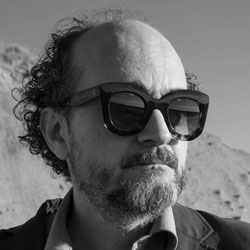
Andreas J. Hirsch is an author, curator and photographically working artist. In 1986 he obtained a PhD in law from the University of Vienna. His literary oeuvre includes books on Pablo Picasso, Tina Modotti, Friedensreich Hundertwasser, HR Giger, Ludwig van Beethoven, as well as the children’s book *Florian Featherlight and the Quest for the Magic Pearl*. Since 1996, he has been involved in various aspects of Ars Electronica – as an advisor, curator, juror and artist. Between 2004 and 2007, he participated as a jury member in the Prix Ars Electronica for the “Digital Communities” category, which he helped to establish. He also curated the congress “Open Source Life” at the Ars Electronica Festival in 2010. Together with Gerfried Stocker, he published the book “The Practice of Art and Science” in 2017. His book on the 40th anniversary of Ars Electronica, “Creating the Future – A Brief History of Ars Electronica 1979-2019,” was published in 2019 by Hantje Cantz Verlag in Berlin.
Translation: Laura Freeburn
